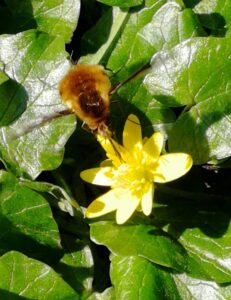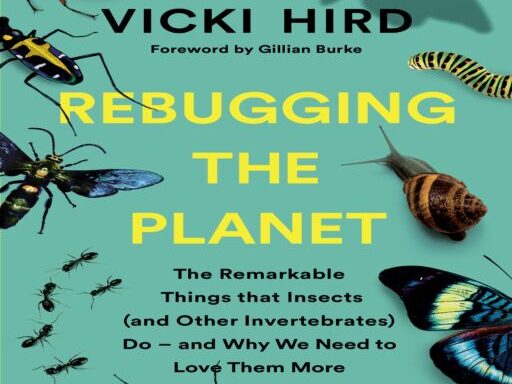This blog is all about rebugging the planet with children. I look at why it’s fun, and also vital to get children rebugging in families and at school, and I’ve provided a list of activities you can start with and resources from great organisations.
Why get rebugging with children at home or in a school?
Children are a ready-made interested audience, finding invertebrates intriguing, ambiguous and they usually want to know more. Their tiny size and being so different to the cuddle pets they know… This creates huge opportunity for fun and learning.. It means any activities are likely to be interesting for them and you. Always a good start.
There are also so many ways to build children’s skills especially if you are out in nature. You could be counting legs or ants, drawing and creating, looking and observing, staying still. It will lead to questioning, telling stories, and all these help build children’s skills for the future. This article talks expertly about how bugs are a great way to teach kids about nature.

But another reason to get rebugging with kids is to ensure they understand them and to avoid putting the ‘fear’ into them about bugs. Too many children quickly pick up messages from their carers and elders. The message often is, frankly, that any old bug they see is dangerous, dirty, going to sting you, going to climb into your ear and so on.
You need to take care, obviously around wildlife.* But the vast majority of bugs are utterly harmless. And they are all a hugely valuable part of nature and our lives in so many way (read my book for more on that!).
Sadly children can quickly loose the fascination. It turns to fear, disgust or disinterest. We all need to avoid doing that and actively starting doing positive activities about bugs will help enormously.
Children are the generation that will need to put protection of invertebrates and all nature at the heart of their lives, habits, consumption, economies and, eventually, their politics. They are critical.
Schools can do so much and many do. I’ve heard over the past few year of wonderful schools and teachers putting learning about bugs into their school time, being so creative and using local resources and community and local business help. They are building bug friendly spaces in school grounds and gardens. Many have been liaising with local companies to get supplies of soil, wood, tools and seeds.
So I have a few ideas here but this is just a tiny sample to whet appetites.. I also list some great organisations with downloadable resources. And its worth reaching out to local authorities, green and nature groups and businesses for help and resources.
A few ideas for activities
- A bug hunt – select a few ways you can spot bugs or the presence of bugs in an area. Then ask the children to go find them and write down what they saw and talk about it after. Bugs are sensitive so may not be in view with loud children around but often ants, spiders, worms, flies and other flying insects can be seen. Do tell the children to stay still and quiet for a while in one spot. They may be surprised at what they see.
- Be a bug detective – on a bug hunt, they may just see the signs of bugs – such as the mines of a leaf miner bug in a grass blade, bush or tree leaf – the white lines that show a larvae has chewed through the middle layers of a leaf like the sandwich filling – you can even see their tiny poos. They larvae (maggots) will then form a hard pupae you can sport and feel and emerge later as an adult. Moths and flies do this and horse chestnut trees tend to often have mines but many other plants like dandelions. Another sign could be a hole ina leaf where a bee cutter has been at work, a spiders web, a slime trail of a snail or slug, a worm cast of soil in the grass, or some ladybird eggs under a leaf. The children can be detectives and search for bug clues.
- Drawing bugs – gather some books on bugs and ideally find some in a green space near you.. and ask the children to draw them.. looking out for special features like colours, strange shapes, how many legs (6 on an insect, 8 on a spider and so on). They could invent their own bugs.
- What do bugs need? – get the children to think about what the bugs may need (much like what we need) and how they get these things. You could start to look at features on bugs which they have found and which may show how they get these. For instance the sucking mouthparts on a butterfly to get the nectar in flower, or pincers on a beetle to grab prey, or a web to catch food, slimy skin on a worm to move through soil..
- Get an expert to talk bugs – Get the local wildlife experts and organisations (such as your local wildlife trust, RSPB group or nature group) to give a talk or a wildlife walk showing what’s there – they will have expertise and the right places to see bugs.
- Make the school grounds and buildings bug friendly – with a beetle log pile, a solitary bee hotel (they don’t sting!), bushes and wildflower patches. A pond is great way to bring in the invertebrates and can be a safe place done carefully. Your home or school buildings can host flower pots and window boxes and attract pollinating insects most of the year. You can get the children to do designs and think about what the creatures may need.
- Read bug story books – there are many out there now – and talk about what happens to the bugs – here is a good list from BBC Wildlife magazine for starters.
- Keep invertebrate pets – I did keep Indian stick insects when my kids were young and that was fabulous – they are very easy to keep and free to feed. But do check out best care and what not to keep.

Some useful resources and organisations
Buglife The Invertebrate Conservation Trust – is a great organisation in the UK and you could download some of their resources here for children and schools – Activities to do with children and in schools
The UK Royal Entomological society runs Insect Week each year to introduce everyone but especially children to insects (sadly not all bugs!) – their website is here and is great with short animations to watch and discuss, lots of learning resources and plenty of ideas of things to do. And each you they run events around June time you can visit.
Garden Organic have fabulous school resources and a site to visit to learn about growing your school’s own bug friendly food.
On The Wildlife Trust there are some good general wildlife guides and your local Wildlife Trust will be hugely helpful on local species and may provide a speaker to come in and give a talk or a visit to one of their sites.
RSPB have a load of great resources online which will include invertebrates as well as wider wildlife and birds especially . They have a wild welcome pack for children with a magazine designed for different age groups.
There are many specific bug organisations that have great learning resources too such as such as Butterfly conservation and Bumblebee Conservation Trust and many others so if you have a specific bug to look at, do see if there is an organisation for it – there usually is, do google it and I list many in my book.
The Field Studies Council have fabulous guides to use for identifying wildlife including bugs and they also and run field courses for schools at all key stages.
Happy rebugging with the children!
*I well recall a camping trip where my young children disturbed a wild bee nest! My youngest was stung many times but he recovered and did not become scared of bees. We explained why they stung (and gave him a good dose of antihistamine!).
